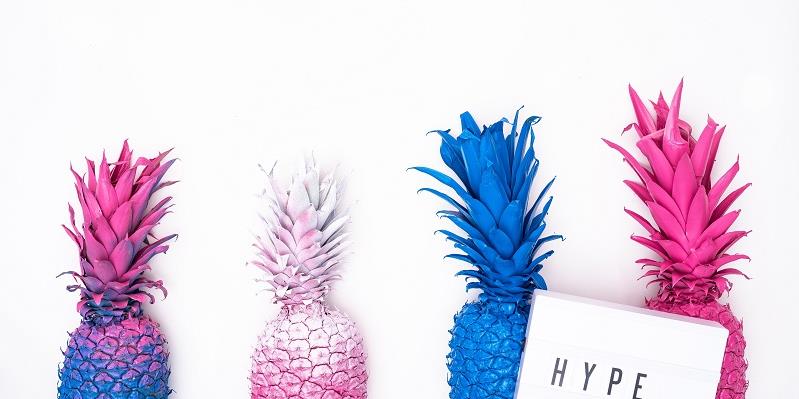How To Tell Your Brand Story Using Visuals
Our earliest childhood memories are rarely anything but images, scenes from our past which are clear enough to offer recognition—a bed set, a toy, a playground or a parent.
Rarely are these early memories anything apart from images. While images may be accompanied by sounds, sensations, or smells; these are almost exclusively in conjunction with imagery. Images can come without these other senses, but these senses are not individually remembered until we are much older.
Why?
Since human beings perceive most of the world through sight, our brains are programmed to process and remember visual information with great retention.
Research shows that “When people hear information, they’re likely to remember only 10 percent of that information three days later. However, if a relevant image is paired with that same information, people retained 65 percent of the information three days later.” So, as a child, if you closed your eyes to hear instructions, three days later you would remember fragments of those instructions. However, if you told and shown those instructions through a series of videos or photographs, without review three days from now you would be able to complete that task with passable accuracy.
Visual processing—even for audio and kinesthetic people—is a powerful form of perception and retention. No wonder visual storytelling is the most powerful marketing campaign in the 21st century.
Visual Storytelling Defined
Visual storytelling can be best defined by its most prevalent usage. Netflix. Hulu. Vudu. The television and movie industry as a whole has cornered the market on visual storytelling. Visual storytelling is the use of imagery—whether movies or photography—to tell a specific narrative with the purpose of evoking emotional and cathartic experiences. In visual storytelling—particularly in branding—this process is designed to educate, but ultimately shade the viewers to reach a specific conclusion.
This conclusion can be a moral, a sales pitch, or simply an open-ended hypothetical to leave the watcher thinking for days to come. Whatever conclusion the author wishes to convey, visual storytelling is the most powerful tool available to mankind.
Telling Your Brand Story
While there are no hard and fast rules for telling your brand’s specific story, following a general guideline will give you the tools you need to craft your brand’s story in a truthful and captivating manner.
1. Be Authentic
According to an infographic from the agency Bonfire Marketing, 91 percent of customers want brands they follow to be authentic in their social media posts.
Social media gets a bad rap for generating insincere content—content most users scroll past without a second thought, or worse, with annoyance.
Authenticity in branding isn’t as complicated as it seems. While innovation in marketing campaigns is to be sought, often the greatest innovations are those that come from the simplest changes. Authenticity comes from being truly yourself, and the best way to show that to your audience to get an exclusive sneak peek.
2. Show Your Company Culture
When telling people about the projects you’re working on, the charities you partner with, the team you’re building, people want to see live action the work you’re doing. Showcasing your company culture through candid photos from company game nights, live streams of awards ceremonies, interviews about real problems the world and your company are facing… all of these methods are incredibly powerful for engaging your audience on a human level.
This can be done through video campaigns, infographics, a company inspired meme. The possibilities are truly endless and each possibility stems from who you are as a company and who you want to become.
This is how you show authenticity to your audience. You show them who you are, as you are, and what you’re doing to become—and help others become—the best they can be.
3. Make Sure Customers Relate
When showing your company culture through imagery, be sure to take your target demographic into account. Market to not just their age, but to the ideals you both share. Selling body lotion is one thing. Selling body lotion that gives Millennials the opportunity to moisturize their skin and give a free bottle to an orphan with dry skin, that’s a game changer. Not only does your consumer get a product they want and need, but they get to help someone else in need with their purchase.
While not every company is going to partner with charities, nor can every company afford to give away free versions of their product, every company does have the ability to show their care for humanity. Maybe you cannot give away free items, but you can use renewable energy and sources when creating your product. Highlight your economic friendliness through your imagery campaign.
Show your consumers that you share in their concerns.
4. Advertise Using Their Preferred Media
Your imagery campaign should be consistent across all mediums. While you should be using a variety of videos, memes, gifs, and infographics, you need to do some quality research on the social platforms your target audience hangs out on. Facebook is making some major changes going into the 2020s where the newsfeed is going to be mostly video content. Instagram is the place where your photography campaigns are going to soar.
You need to know where your market hangs out, and you need to know what media is going to catch their eyes. Do some solid research on the upcoming trends and apply them to your visual storytelling. After that, the sky is the limit.
Related Posts
In the era of high-speed internet, owning a server with a 10Gbps connection offers an unparalleled advantage in terms of data transfer speed, website performance, and user experience.
To make your business successful in the modern age, you need to excel at digital marketing and have a strategy that can allow you to beat out the competition.
In the ever-evolving landscape of digital marketing, link building remains a cornerstone of search engine optimization (SEO).
In today's age, establishing an online brand presence is crucial for success. With the vast reach and accessibility of the internet, launching your brand online can open up endless opportunities for growth and expansion.
Ecommerce marketing relies heavily on understanding consumer behavior and psychology to drive engagement, conversions, and loyalty.
In the world of interior design, ambiance is everything. From the cozy warmth of a rustic farmhouse to the sleek sophistication of a modern penthouse, decor plays a pivotal role in setting the mood and personality of a space.













Comments
comments powered by Disqus